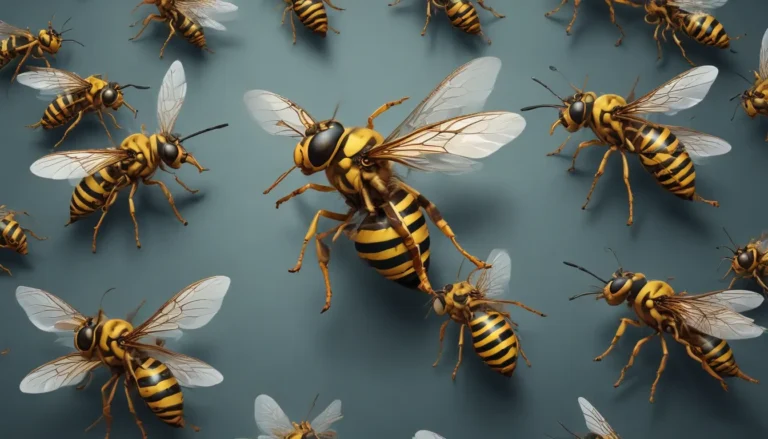The pictures we use in our articles might not show exactly what the words say. We choose these pictures to make you interested in reading more. The pictures work together with the words but don’t take their place. The words still tell you the important facts.
Fire ants, with their painful stings and aggressive behavior, have captured the curiosity of many individuals around the world. Belonging to the genus Solenopsis, these tiny creatures have a significant impact on the ecosystem. In this article, we will delve into the fascinating world of fire ants, shedding light on their origin, physical characteristics, social structure, and environmental impact. Join us as we explore ten captivating facts about fire ants and gain a deeper understanding of these remarkable insects.
The Origins and Global Spread of Fire Ants
Fire ants trace their origins back to South America, specifically Brazil and Argentina. However, through human activities such as international trade and travel, these insects have been introduced to various countries across the globe. Today, fire ants can be found in regions like the United States, Australia, China, and Taiwan. Their remarkable ability to adapt to diverse climates and environments has facilitated their successful spread worldwide.
Identifying Fire Ants: Physical Features and Characteristics
Measuring between 2 to 6 millimeters in length, fire ants are small insects with a reddish-brown coloration and a darker abdomen. One unique feature that sets them apart is their two-segmented waist that separates the thorax from the abdomen. Additionally, fire ants possess mandibles for biting and stinging, along with powerful legs that enable swift movement. These physical characteristics contribute to their survival and effectiveness as hunters and builders within their colonies.
Unveiling the Social Structure of Fire Ant Colonies
Fire ants are highly social insects that thrive in large colonies. Each colony comprises three main castes: the queen, workers, and males. The queen, responsible for reproduction, can live for several years and produce thousands of eggs during her lifespan. Workers, the most populous caste, engage in tasks such as foraging, nest building, and caring for the young. Males have a short lifespan and serve the primary role of mating with the queen to ensure the colony's survival.
Voracious Appetites: The Omnivorous Diet of Fire Ants
Fire ants are considered opportunistic feeders and exhibit omnivorous behavior. Their diet includes insects, seeds, fruits, small vertebrates, and even carrion. Moreover, fire ants are attracted to sugary substances and frequently gather near sweet food sources. This adaptability in their feeding habits plays a vital role in their ability to survive and establish colonies in various environments.
Understanding Fire Ant Behavior: Aggression and Stinging
The aggressive behavior of fire ants is infamous, especially when defending their colonies. In the face of perceived threats, fire ants will vigorously attack intruders, delivering painful stings with their venomous alkaloids. The sensation caused by a fire ant sting is often described as burning and can lead to allergic reactions in susceptible individuals. It is essential to exercise caution when encountering fire ants to avoid discomfort and potential health risks.
Nesting Habits: The Art of Mound Construction
Fire ants showcase remarkable skills in building intricate mounds for shelter and protection. These mounds vary in size, ranging from a few inches to several feet in height. The construction process involves workers excavating soil and utilizing their saliva and regurgitated fluids to shape the mound's structure. Beyond providing shelter, these mounds also aid in regulating temperature and humidity within the colony, contributing to the overall well-being of the fire ant community.
The Environmental Impact of Fire Ants
While fire ants can pose challenges to humans, they also have a significant impact on the environment. Their voracious feeding habits can disrupt local ecosystems by preying on small invertebrates and competing with native ant species for resources. Additionally, fire ants have been known to cause damage to agricultural crops and electrical equipment. Efforts are ongoing to manage and control fire ant populations to mitigate their adverse effects on both the environment and human activities.
The Adaptive Nature of Fire Ants as Invasive Species
Fire ants exhibit remarkable adaptability, a quality that has contributed to their success as invasive species. Thriving in diverse habitats such as forests, grasslands, urban areas, and near water sources, fire ants possess a high reproductive rate that enables rapid colony establishment. This invasive nature poses challenges to biodiversity conservation efforts in many regions, underscoring the importance of effective management strategies.
Fire Ants and Human Health: Risks and Concerns
In addition to their painful sting, fire ants can pose health risks to humans. Some individuals may experience severe allergic reactions to fire ant stings, leading to symptoms such as difficulty breathing, swelling, and anaphylactic shock. Prompt medical attention is essential in such cases. Furthermore, fire ants can disrupt agricultural activities, invade homes, and impact outdoor pursuits, affecting human well-being and livelihoods.
Strategies for Managing and Controlling Fire Ant Populations
Managing fire ant populations can be a challenging task due to their resilience and adaptability. Various strategies, including the use of chemical insecticides, biological control agents, and integrated pest management practices, are employed to control fire ant infestations. Combining multiple methods through integrated pest management approaches is often necessary for effective control. Continual research and monitoring play a crucial role in developing sustainable and environmentally friendly solutions to address the impact of fire ants.
Embracing Coexistence with Fire Ants: A Balanced Approach
Despite their aggressive nature and potential hazards, fire ants are fascinating creatures with a crucial role in the ecosystem. Understanding their biology, behavior, and impact is essential for managing fire ant populations and minimizing their negative effects. By striking a balance between effective control measures and conservation efforts, we can work towards a harmonious coexistence with fire ants, appreciating the intricate dynamics of their existence.
Frequently Asked Questions (FAQs) About Fire Ants
How can I identify fire ants?
Fire ants can be identified by their reddish-brown coloration, two-segmented waist, and painful sting.
Are fire ants dangerous to humans?
Fire ants can pose risks to humans, as their sting can cause pain, allergic reactions, and health complications.
Where are fire ants found?
Fire ants can be found in various countries worldwide, with their origins in South America, particularly Brazil and Argentina.
What do fire ants eat?
Fire ants have an omnivorous diet, consuming insects, seeds, fruits, small vertebrates, and sugary substances.
How can I control fire ant infestations?
Fire ant infestations can be managed through the use of chemical insecticides, biological control agents, and integrated pest management strategies.
As we continue to explore the fascinating world of fire ants, let us embrace a spirit of curiosity and discovery, appreciating the intricate tapestry of nature's wonders that these resilient insects contribute to. Through knowledge, awareness, and responsible stewardship, we can foster a harmonious coexistence with fire ants and other remarkable inhabitants of our shared planet.






